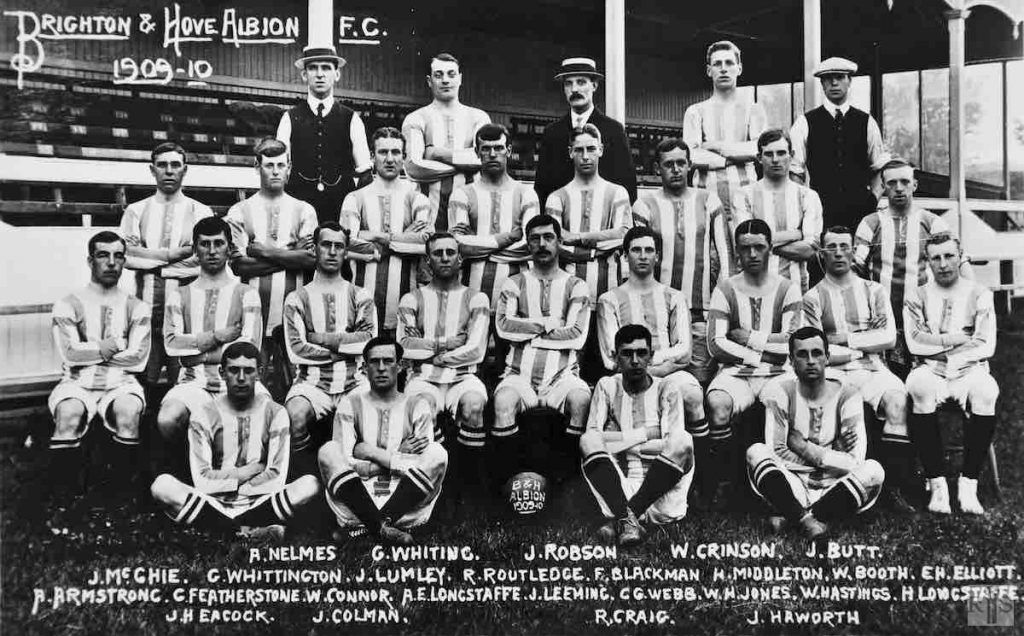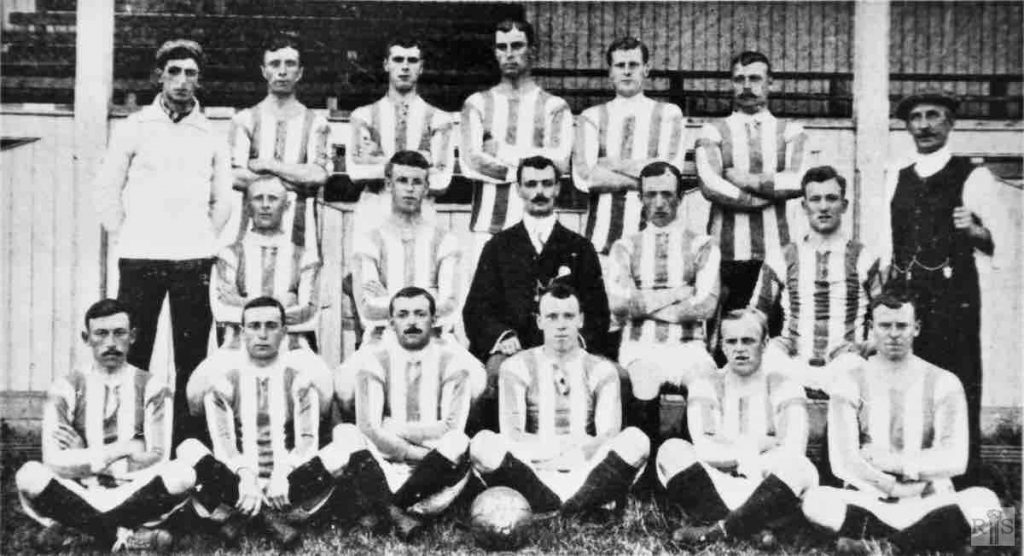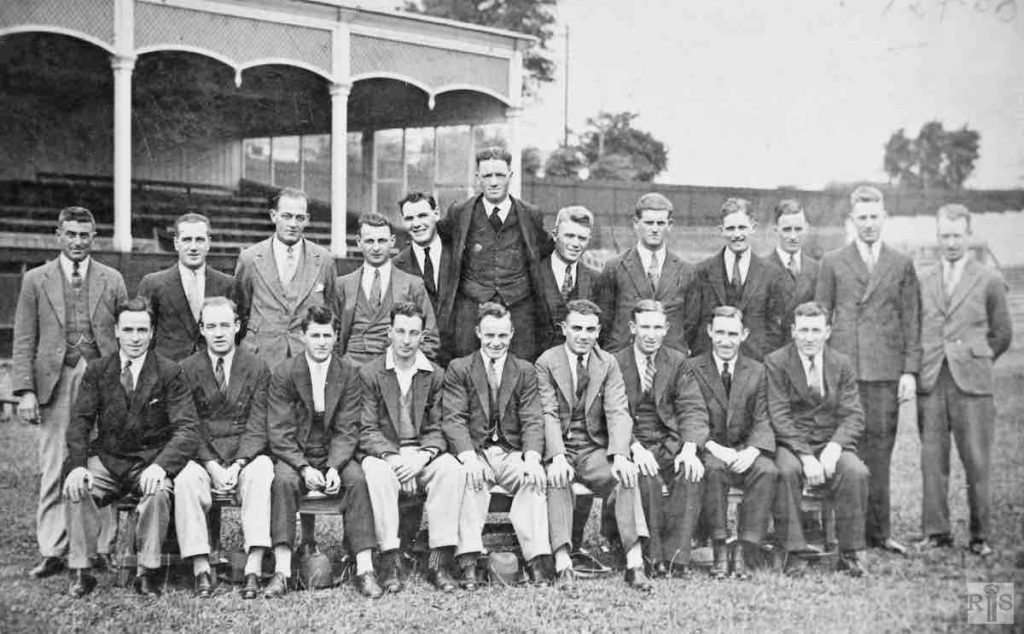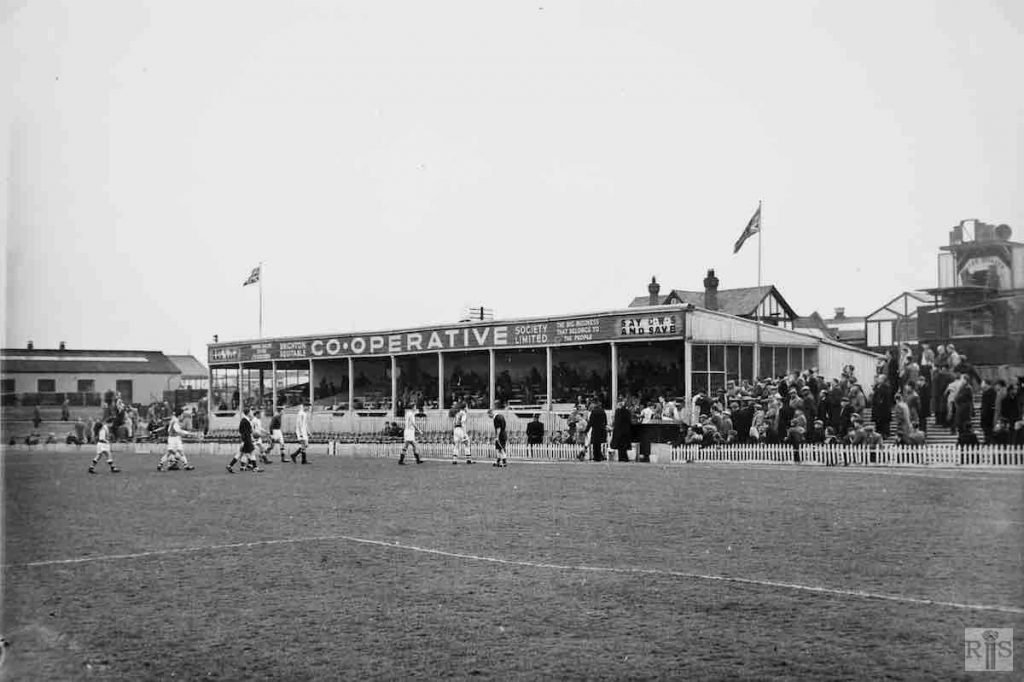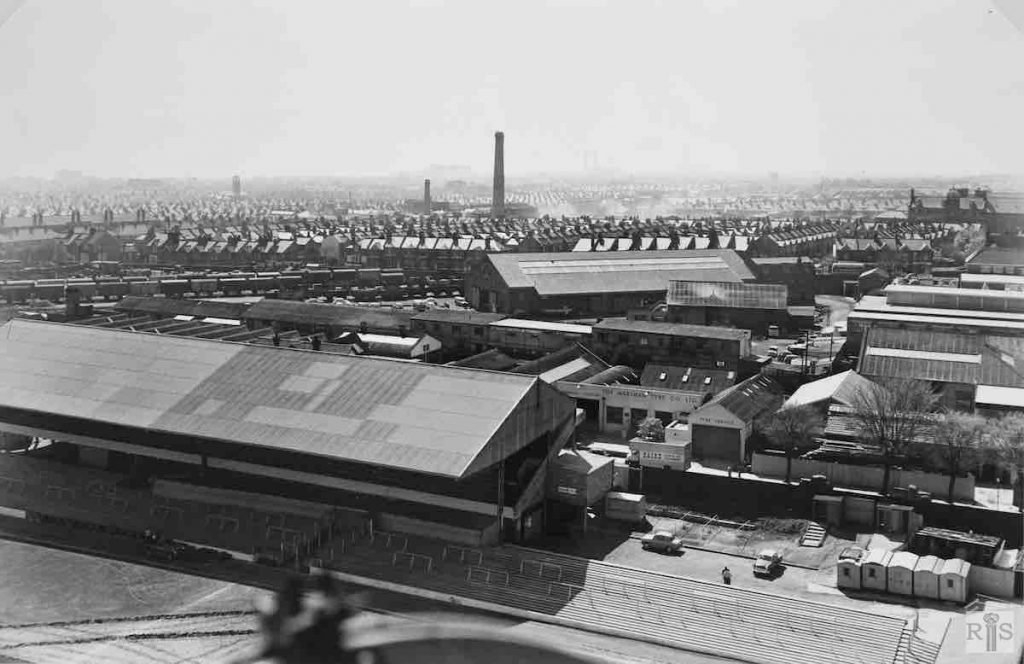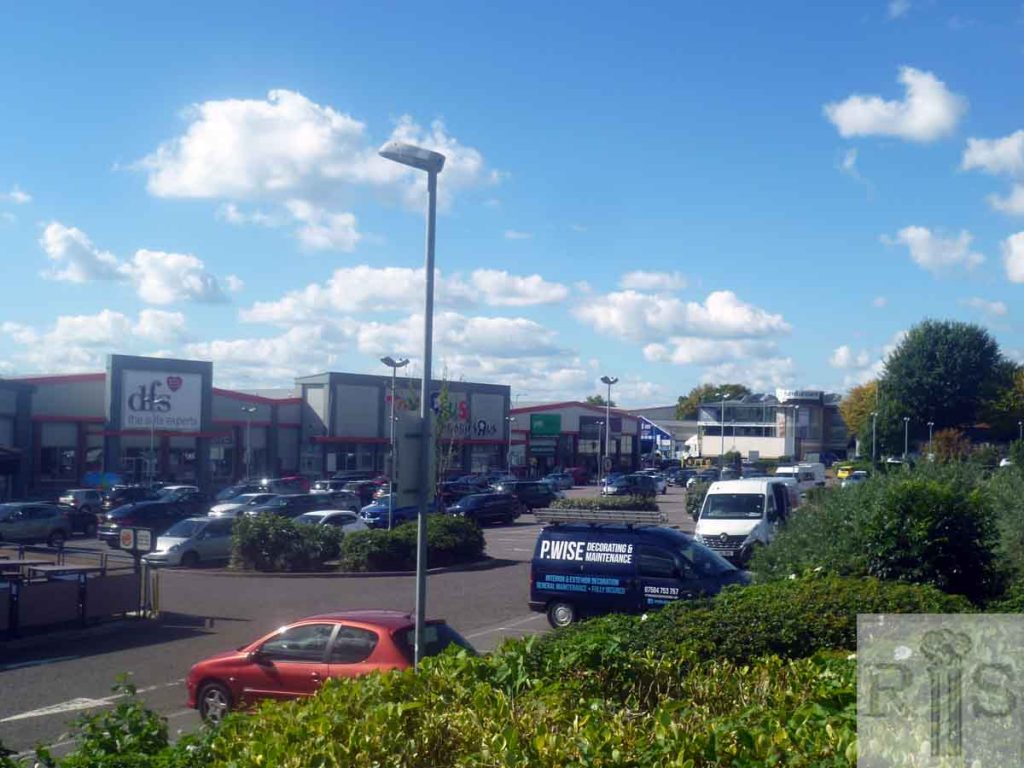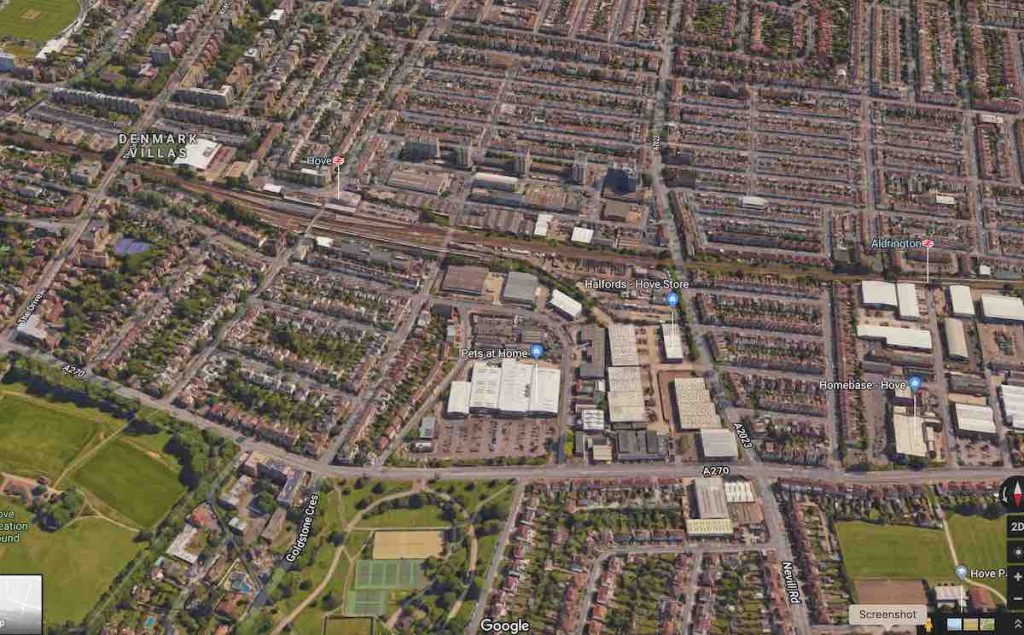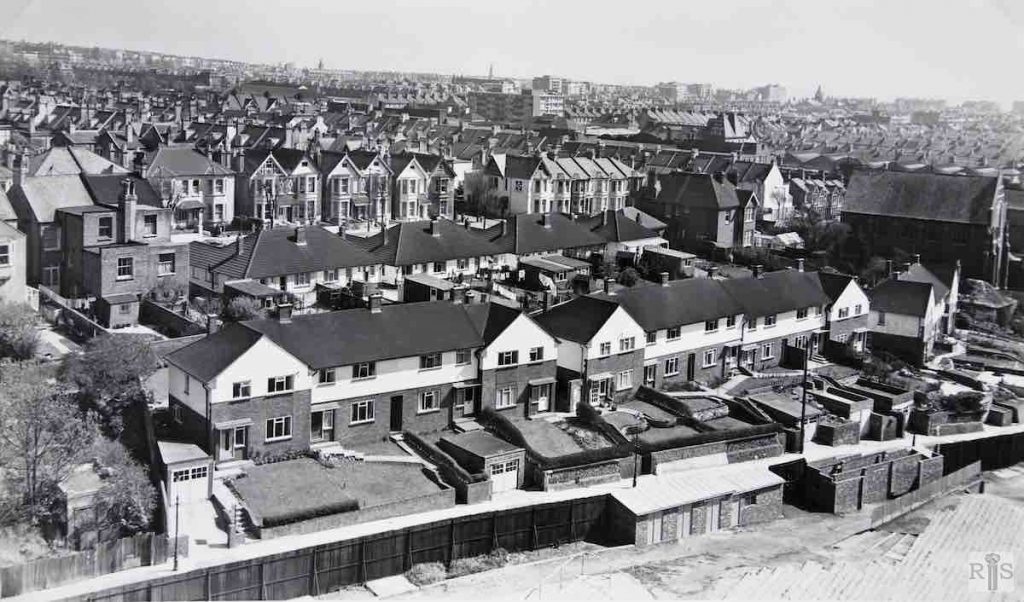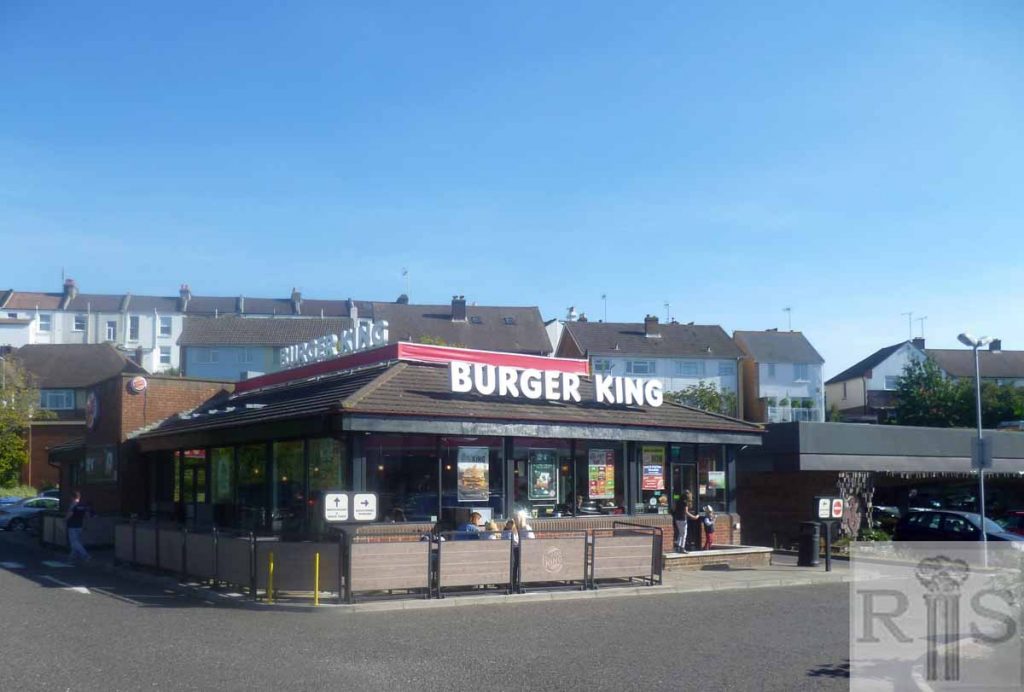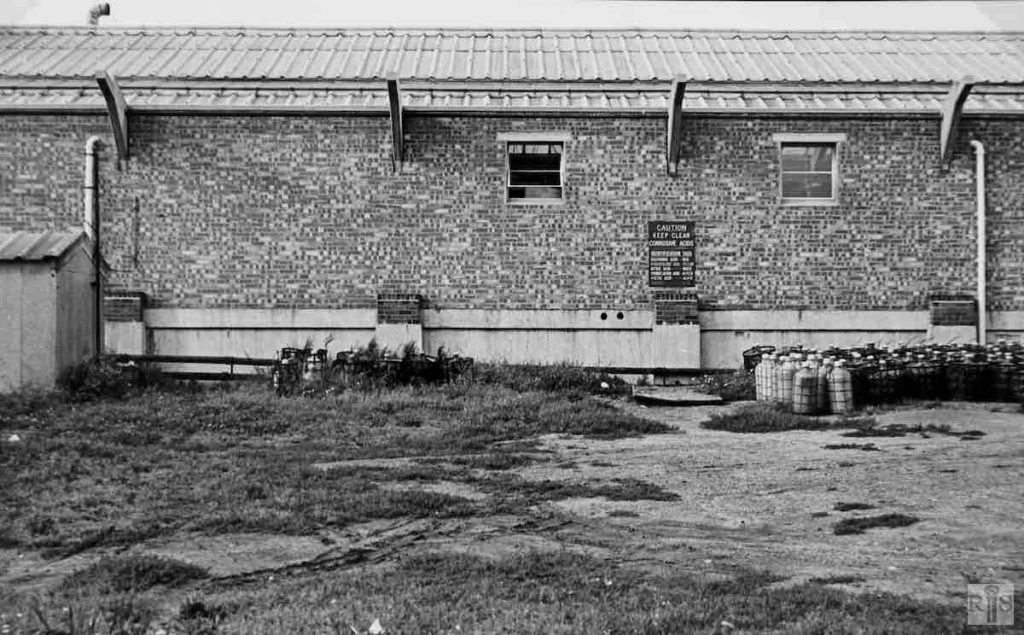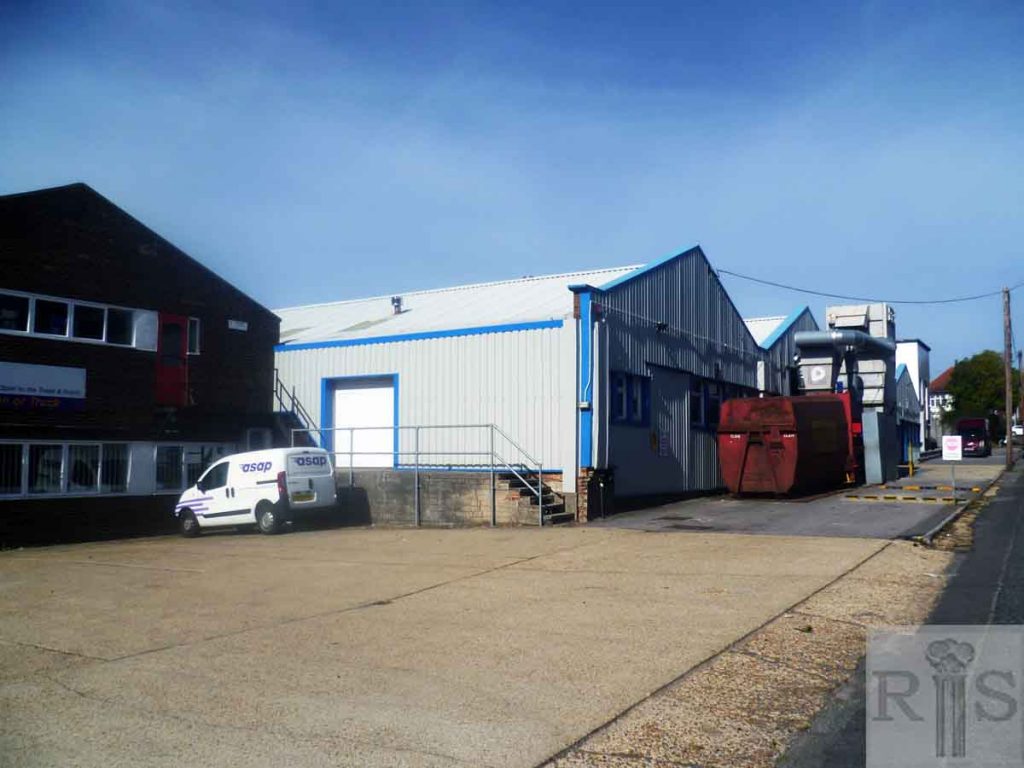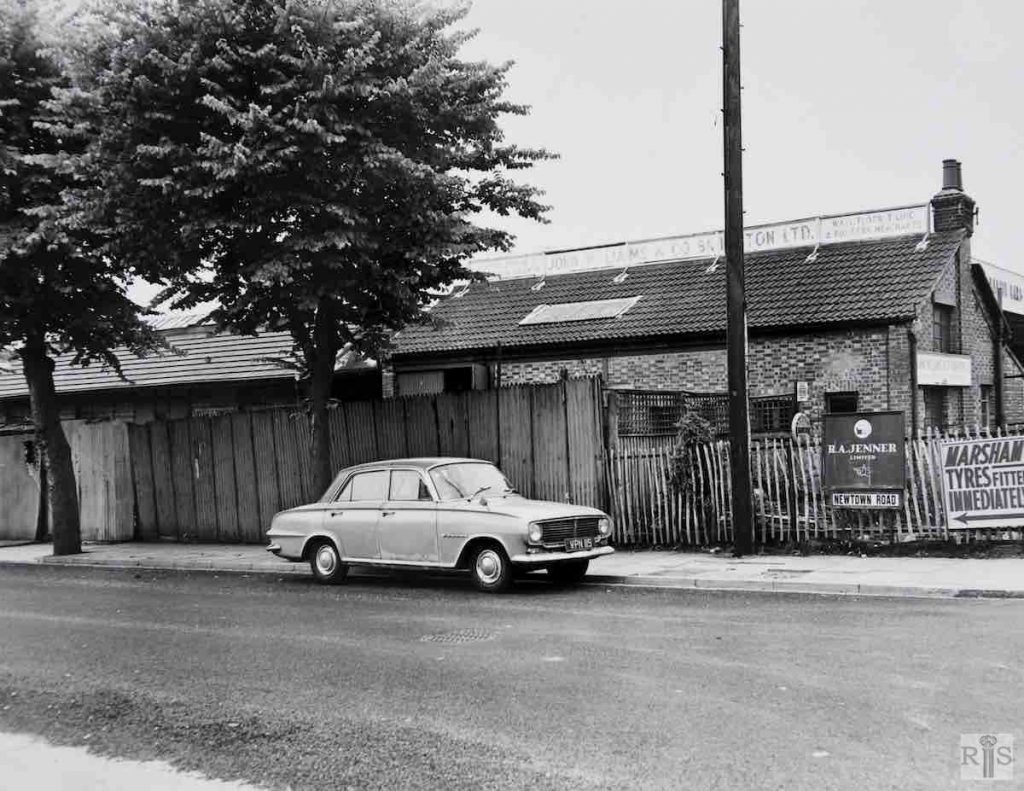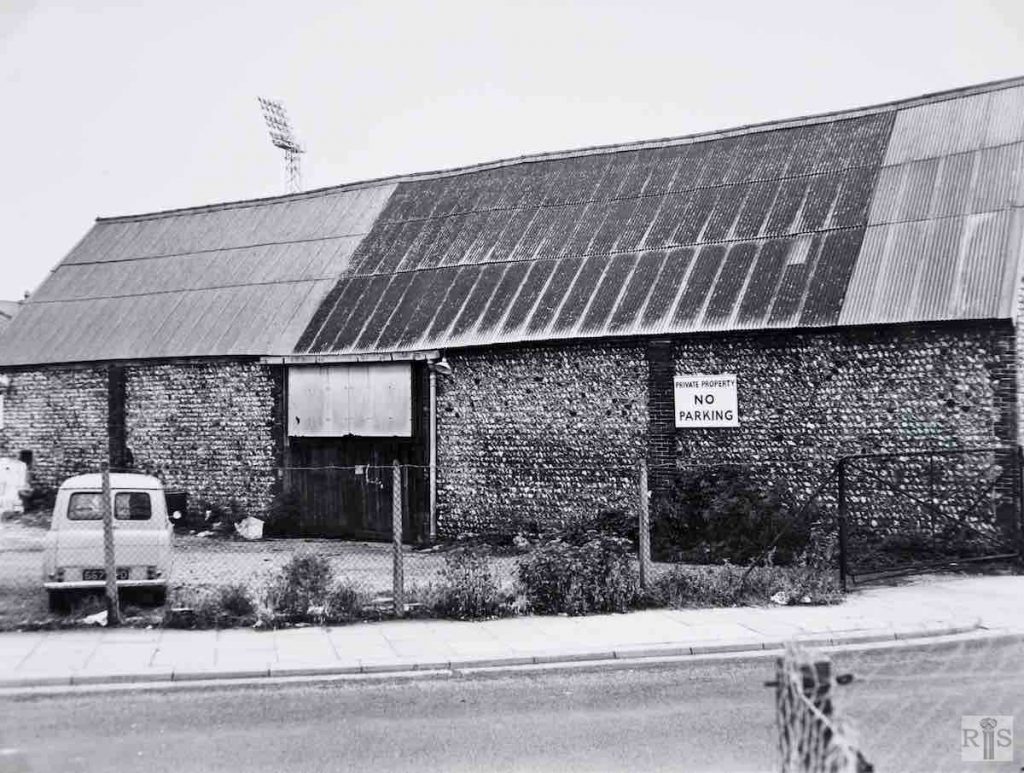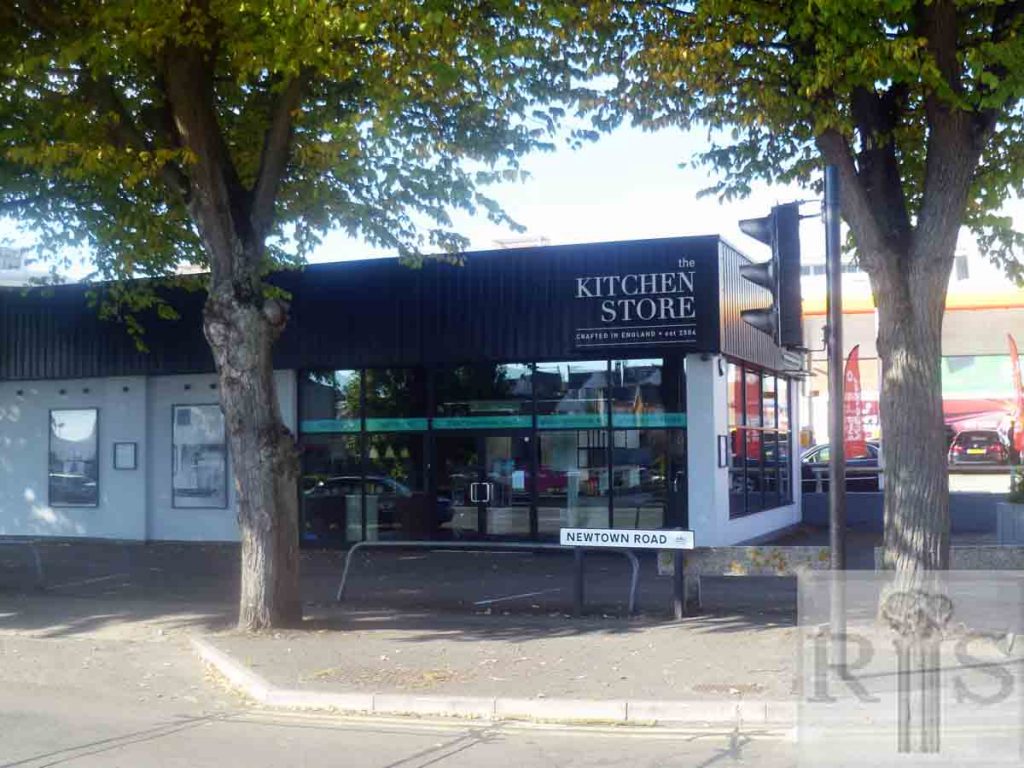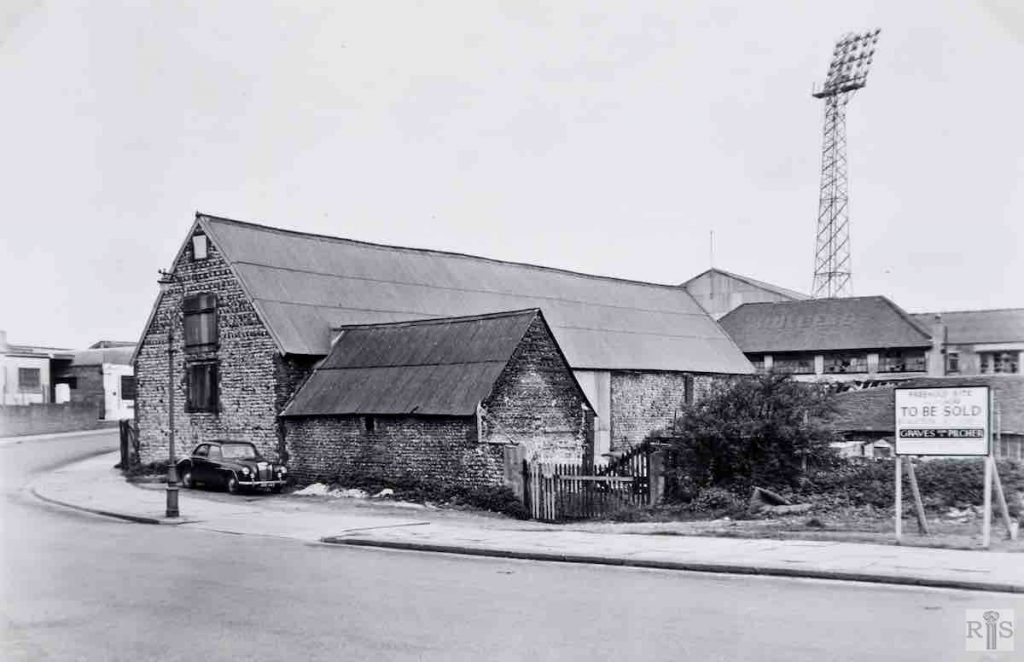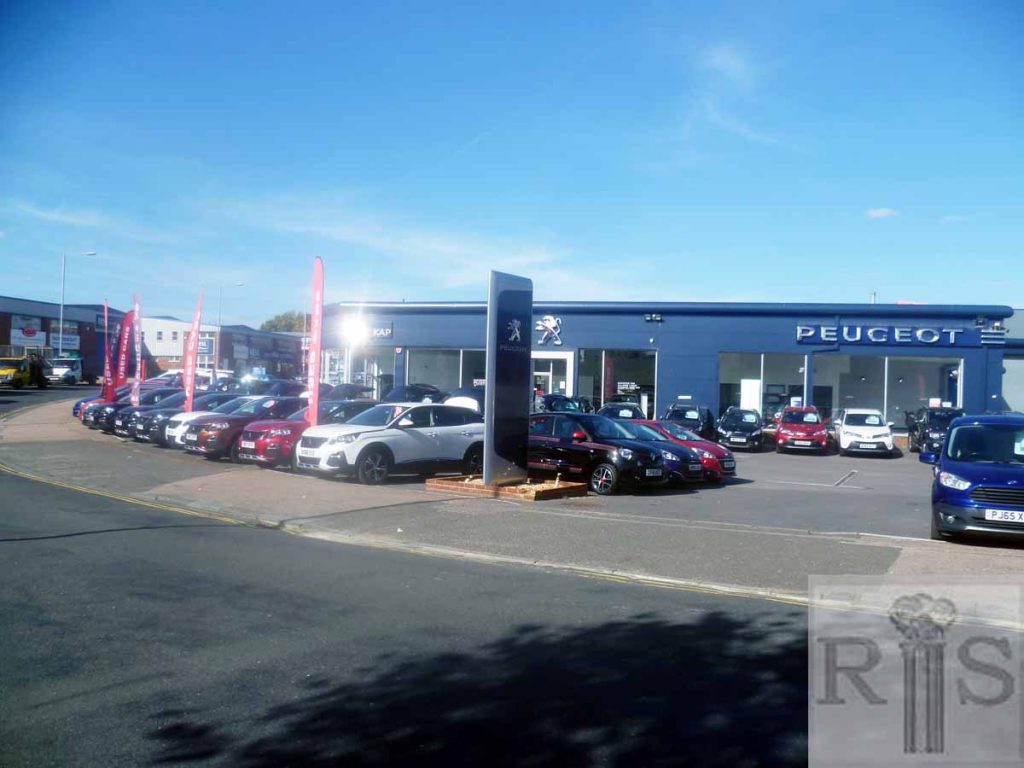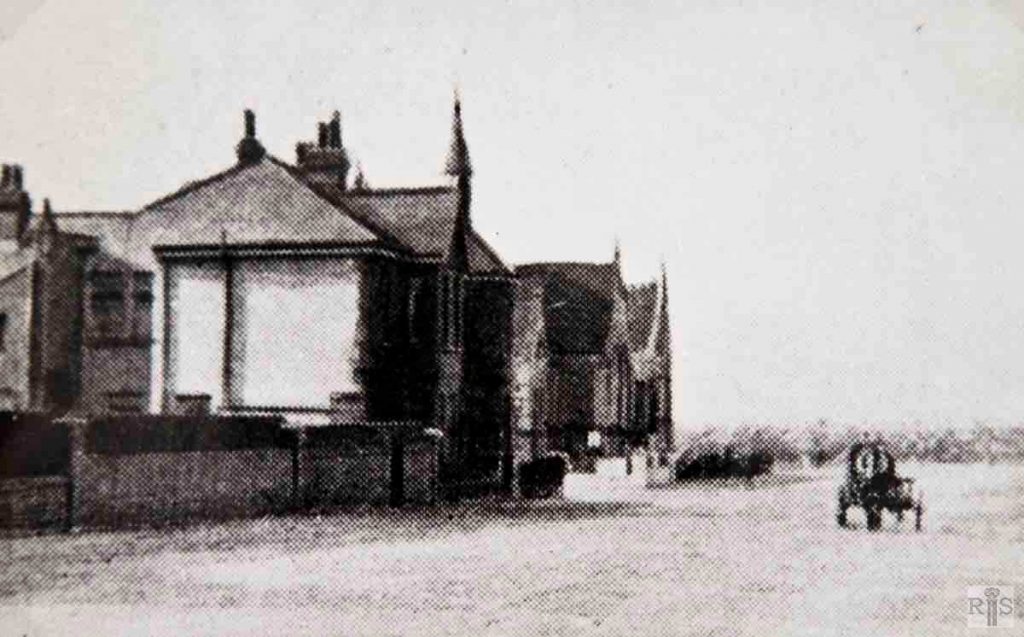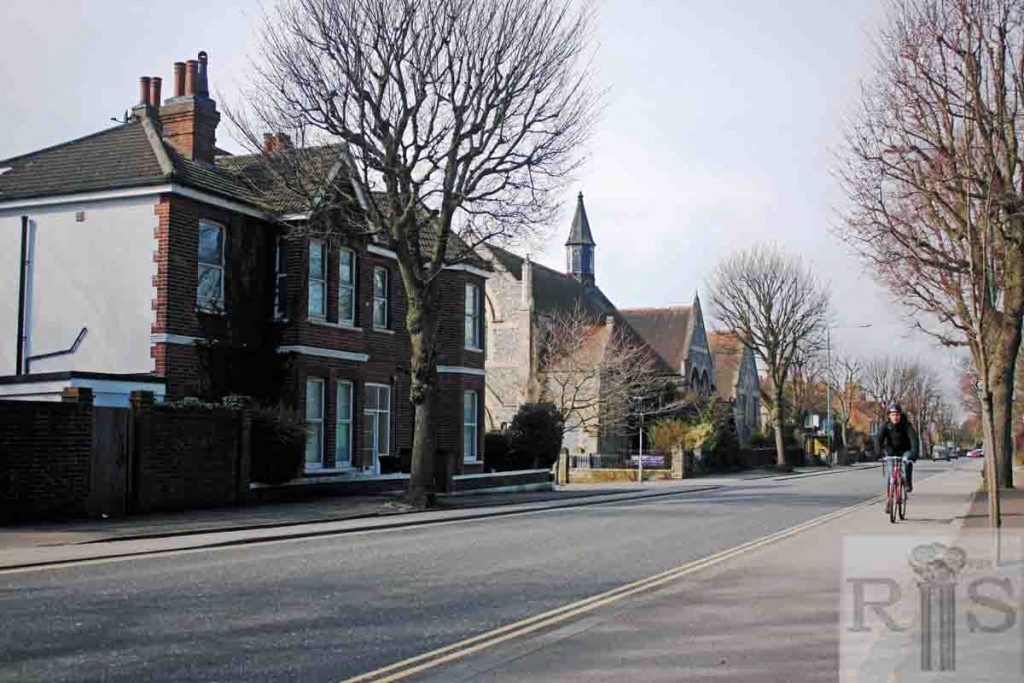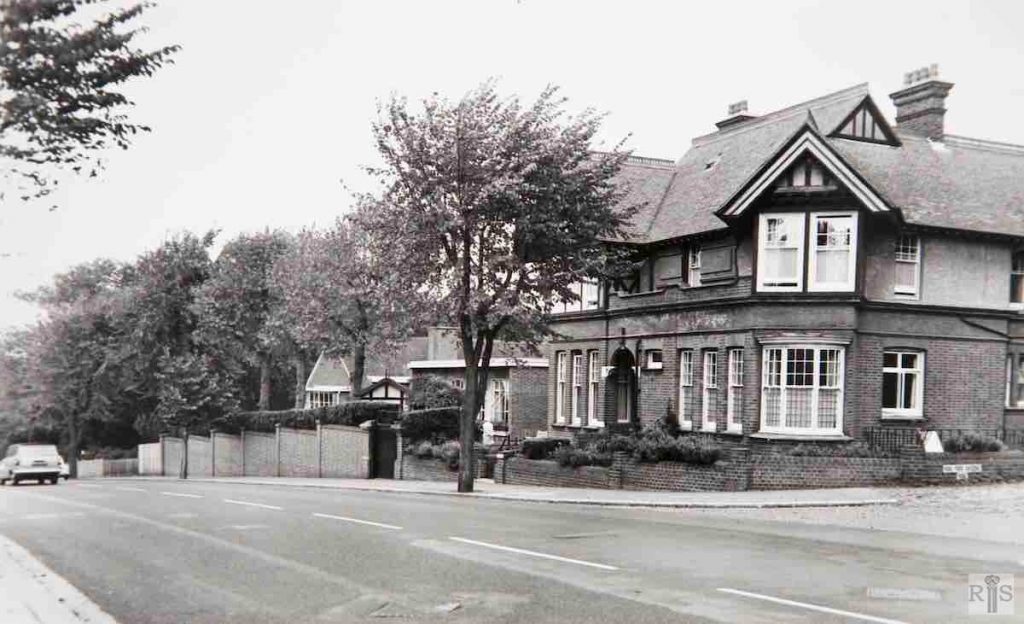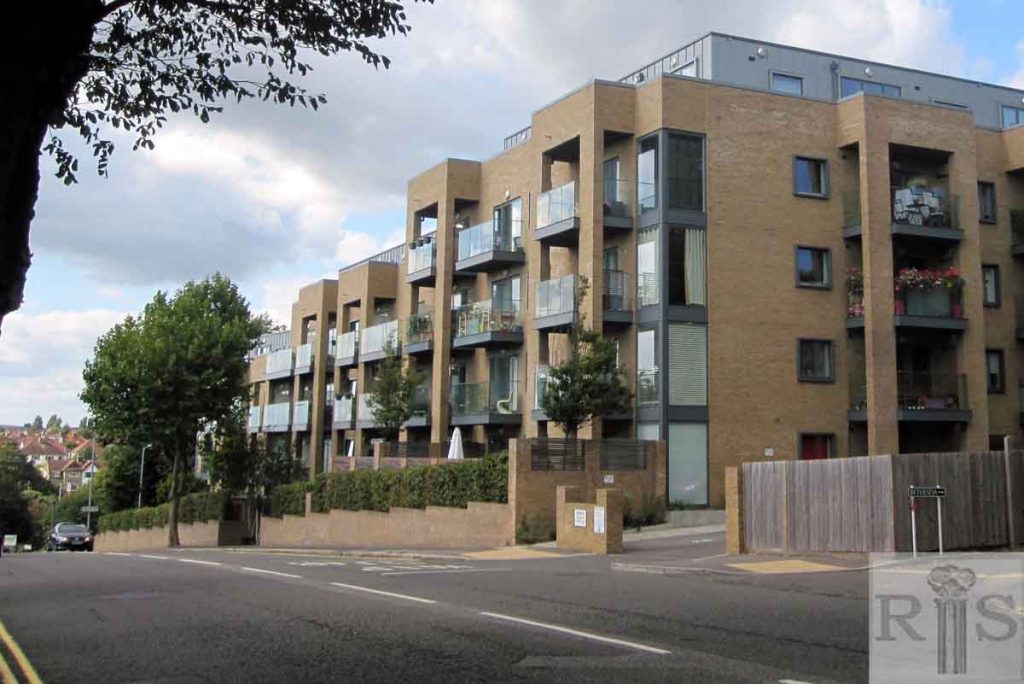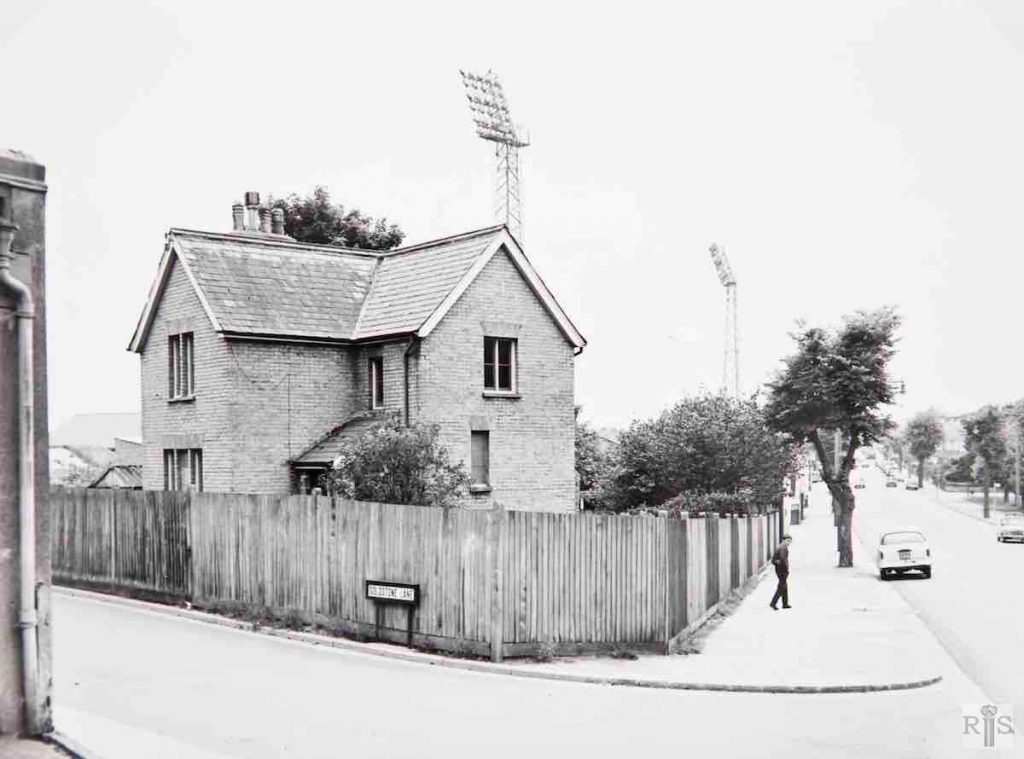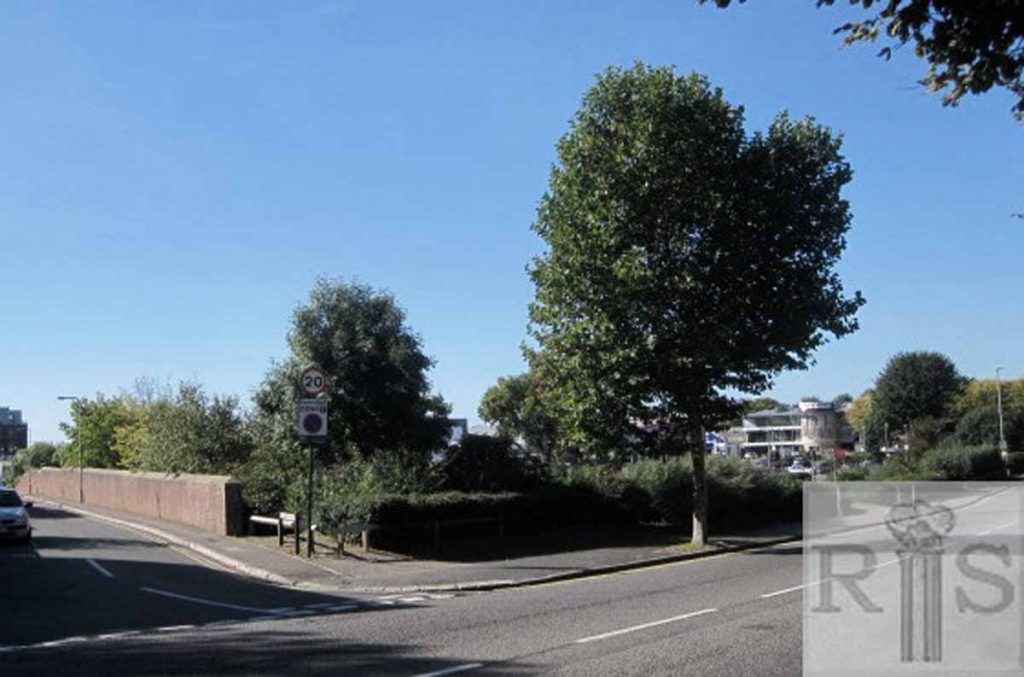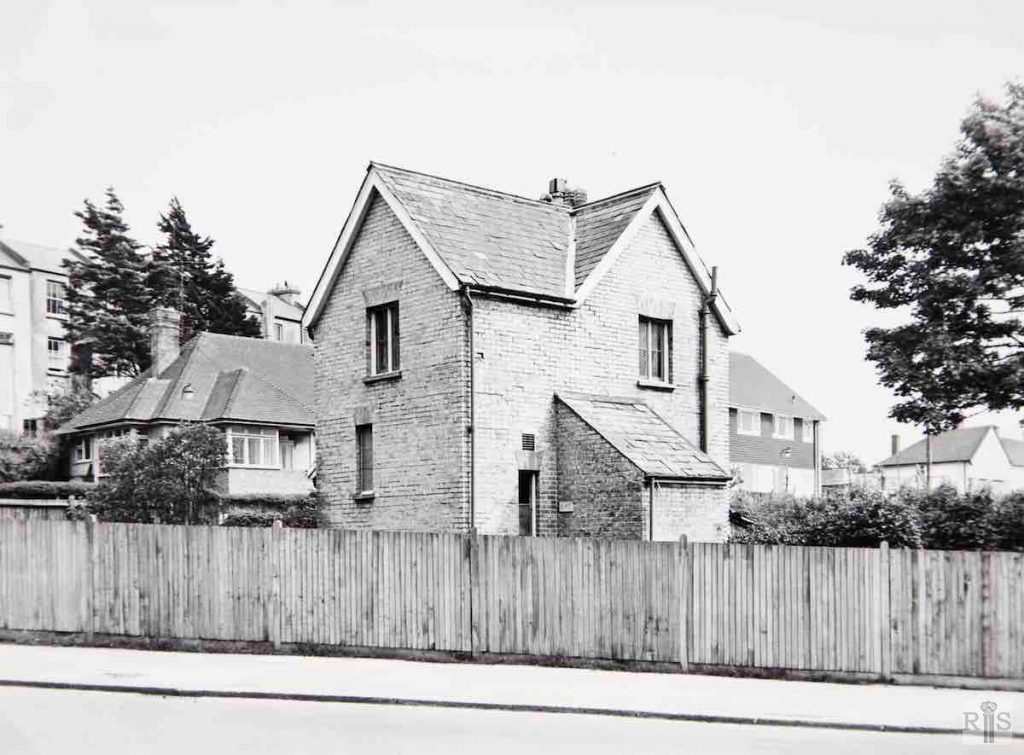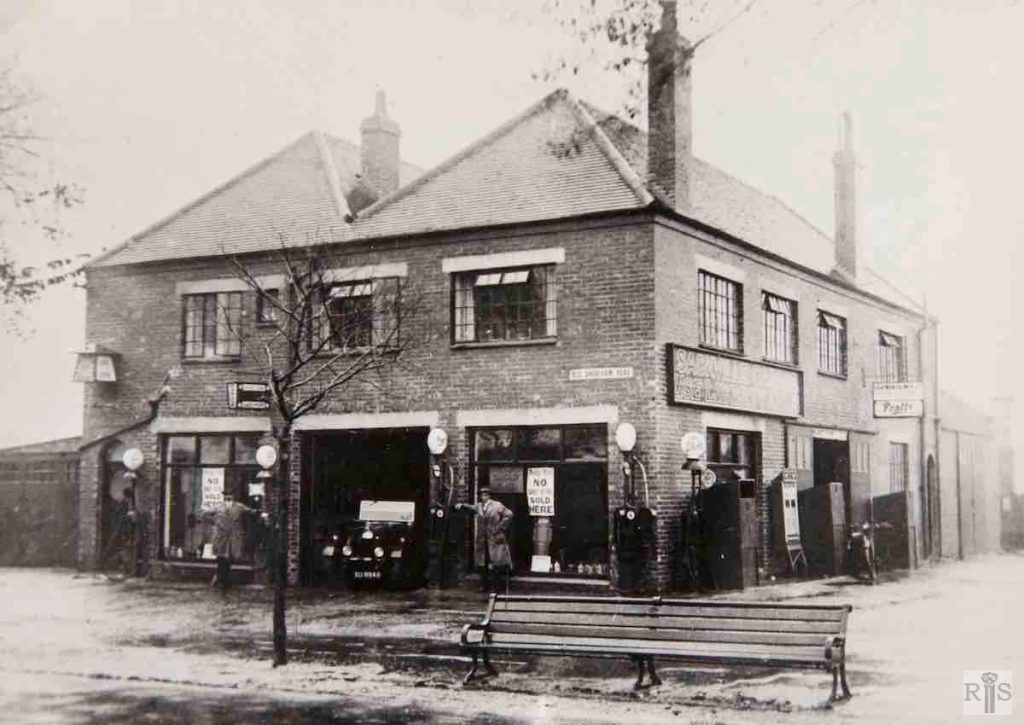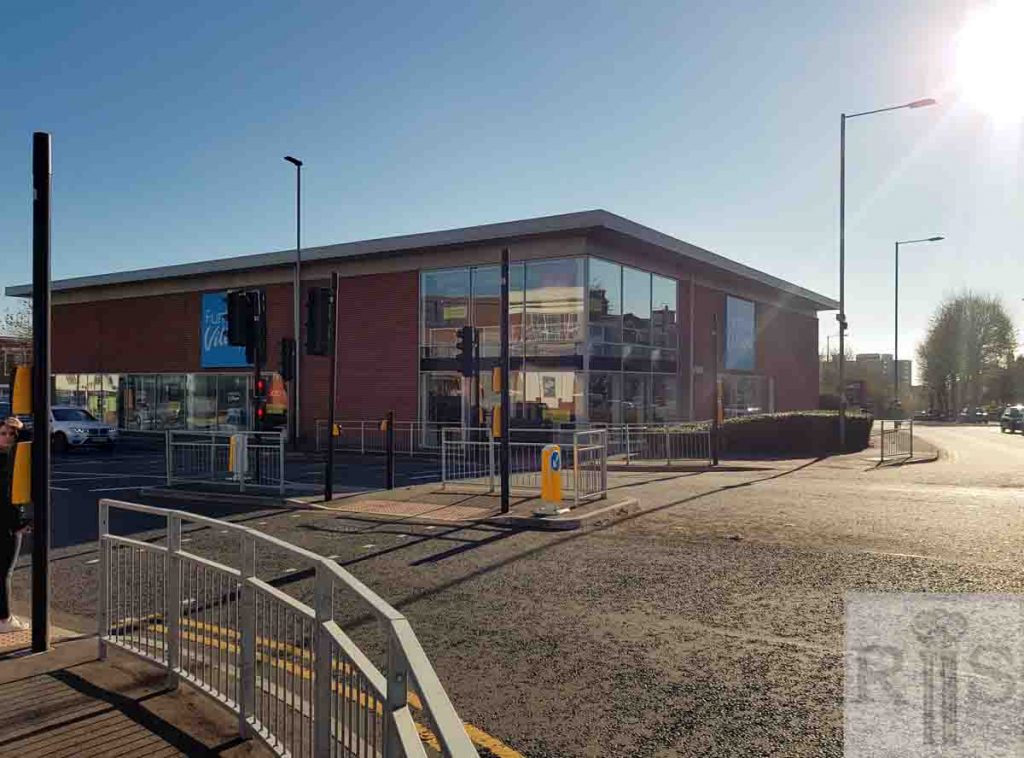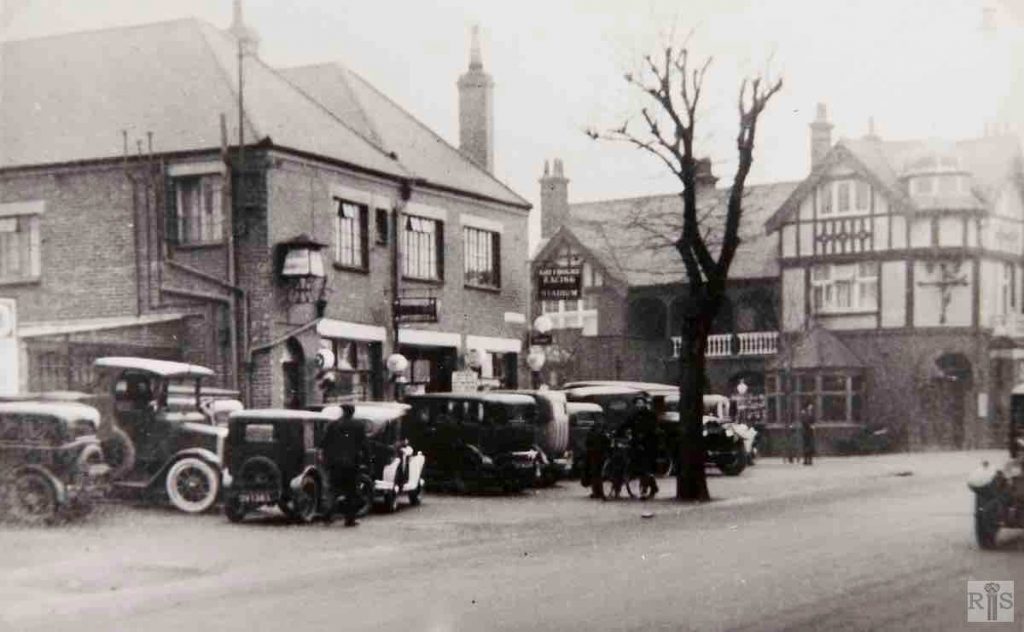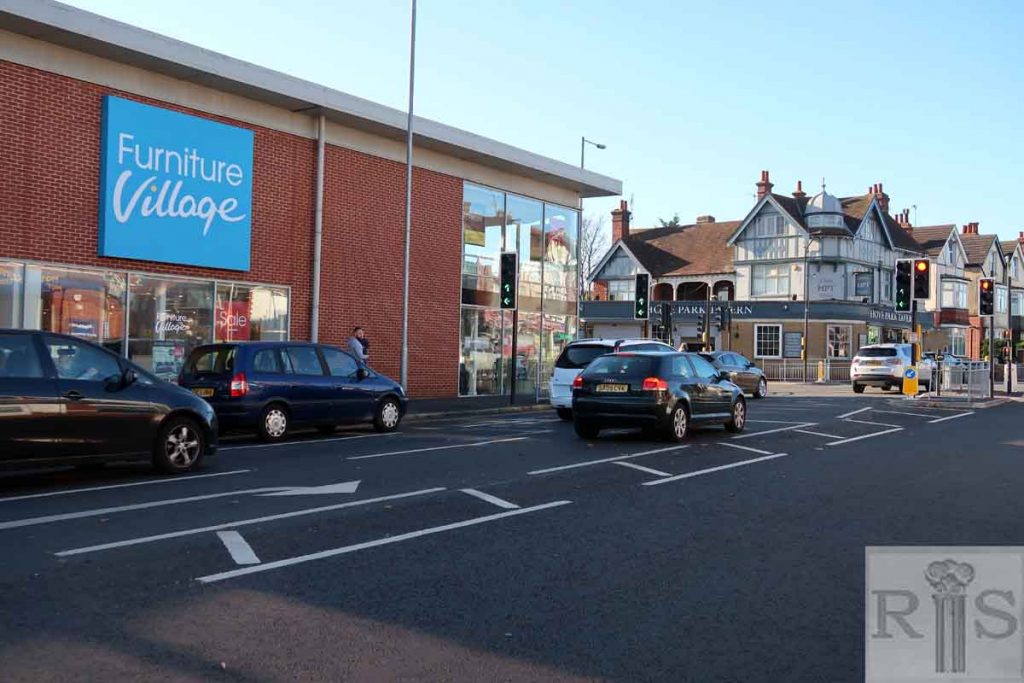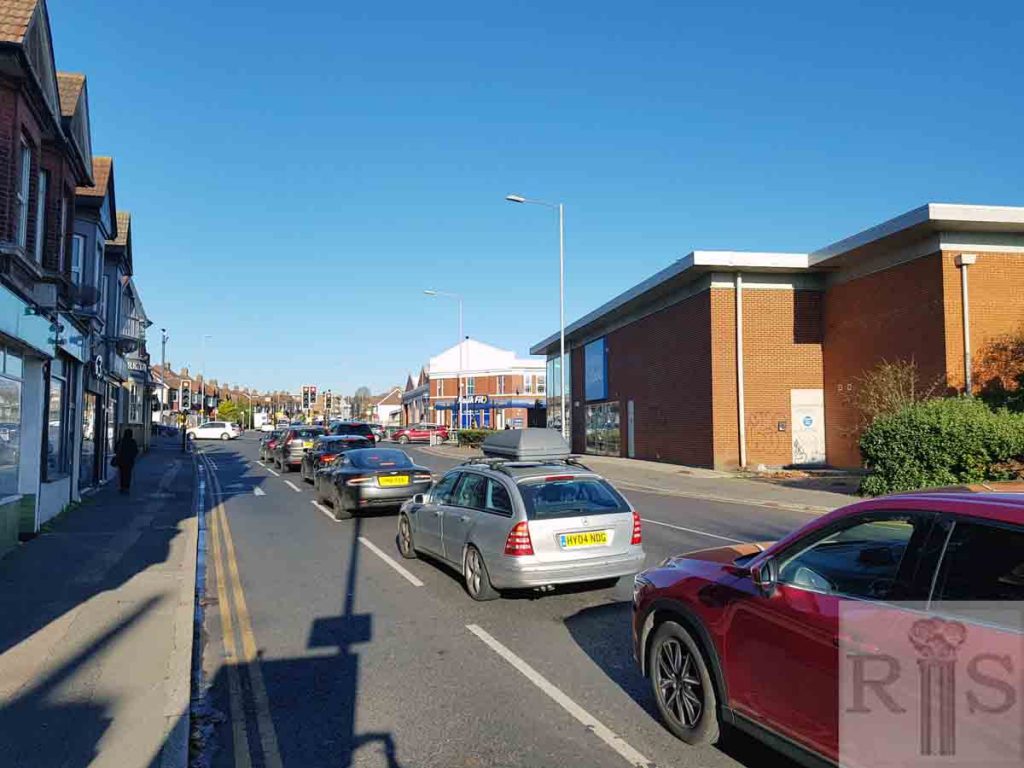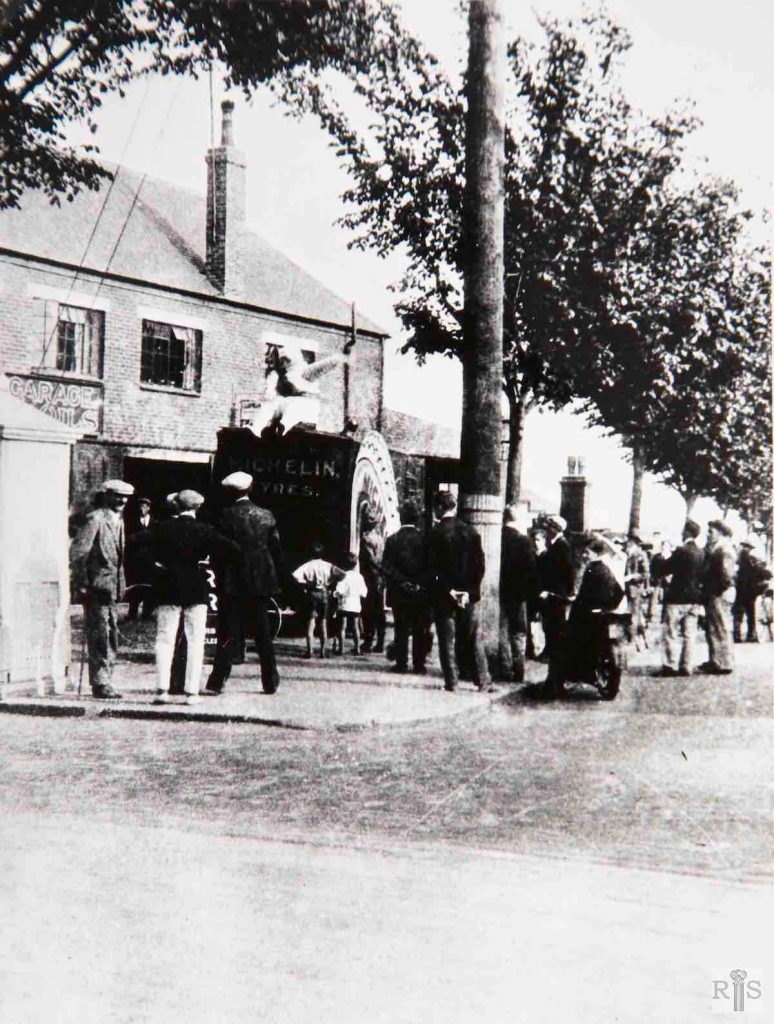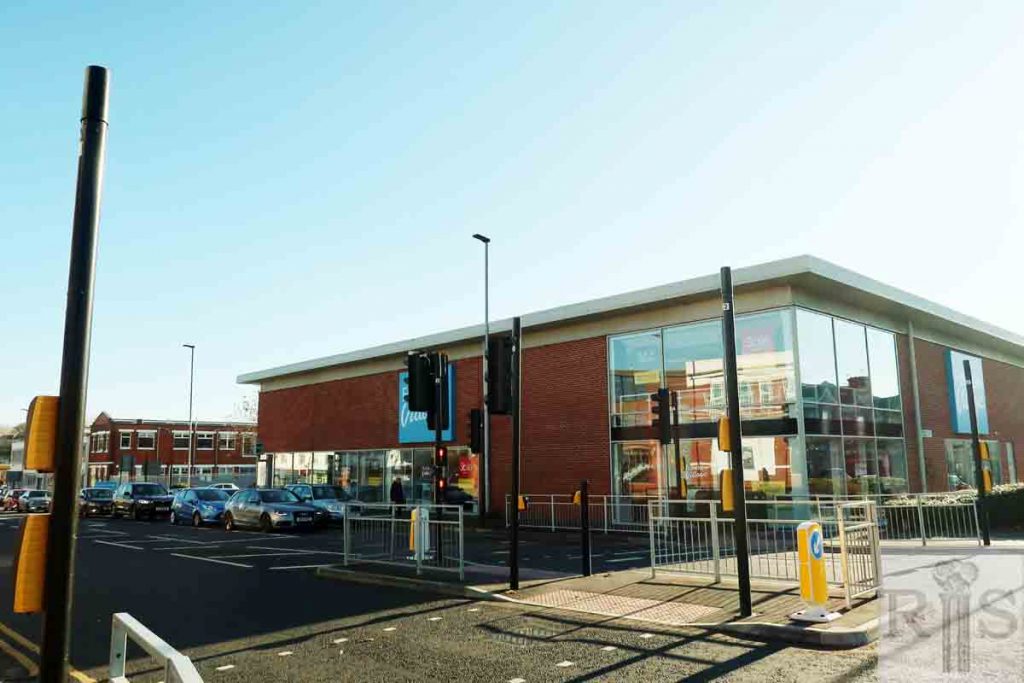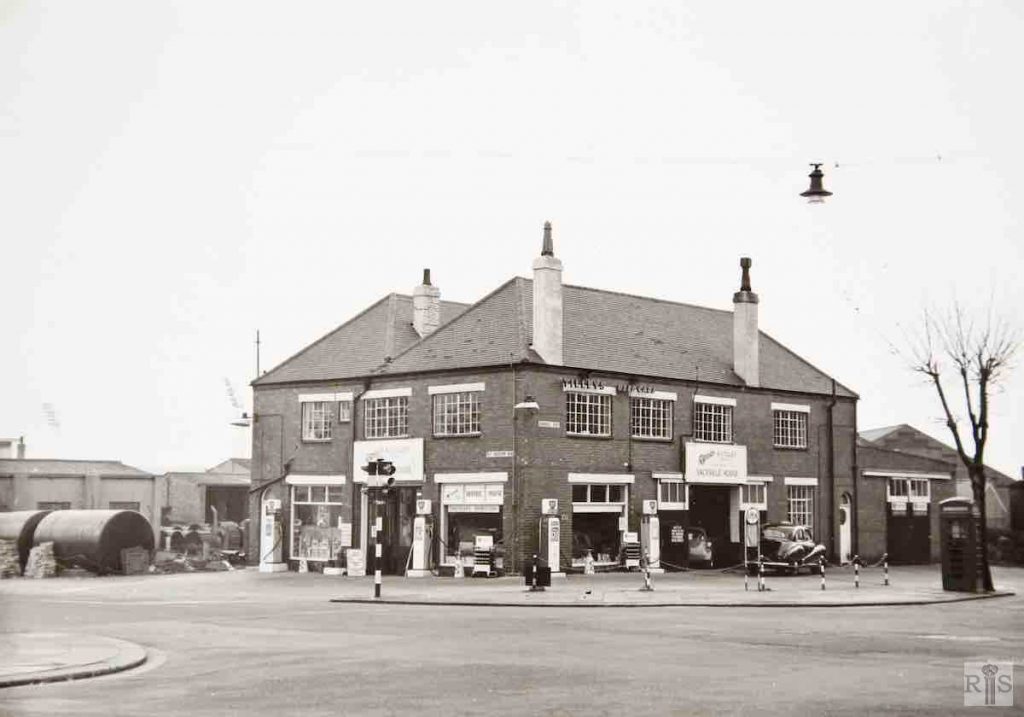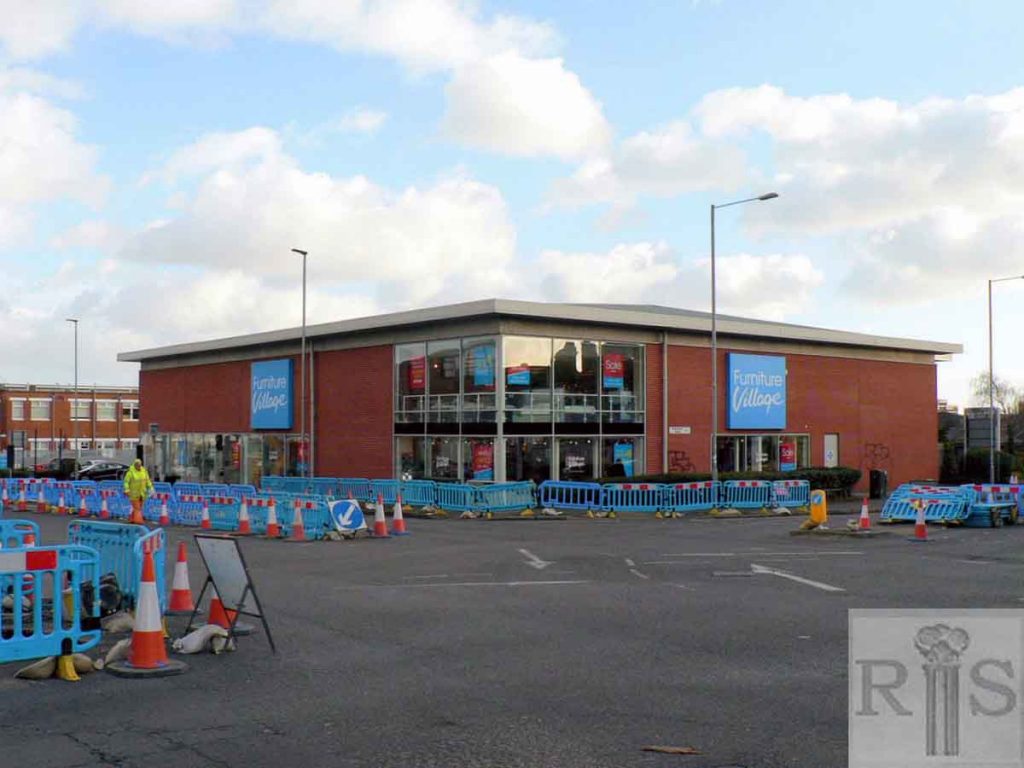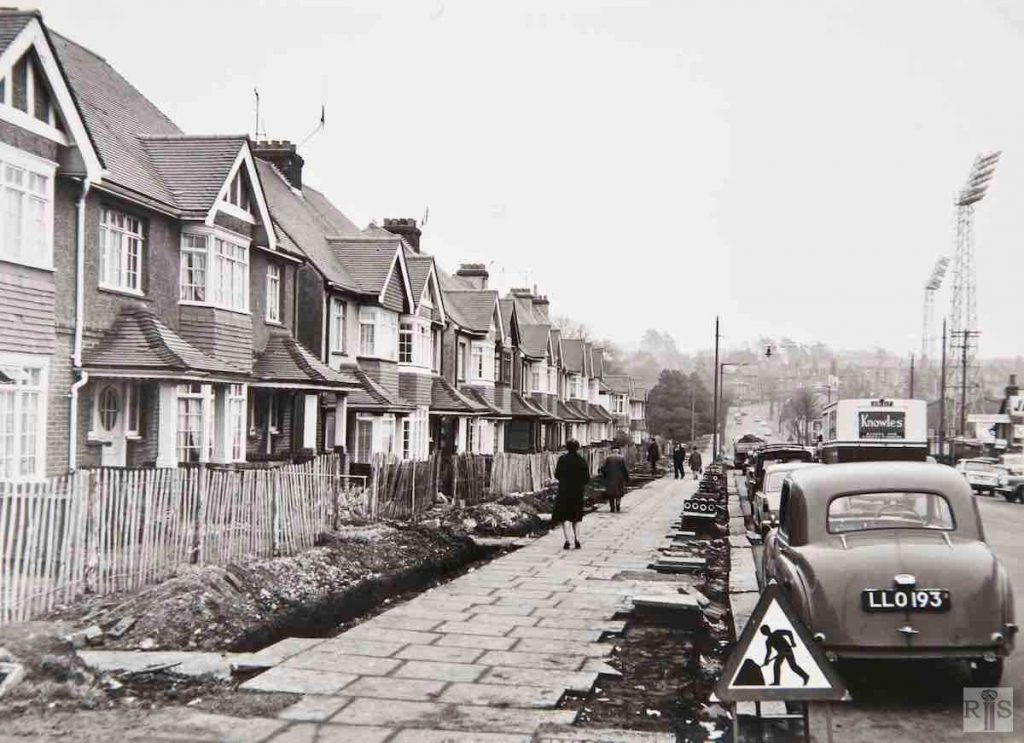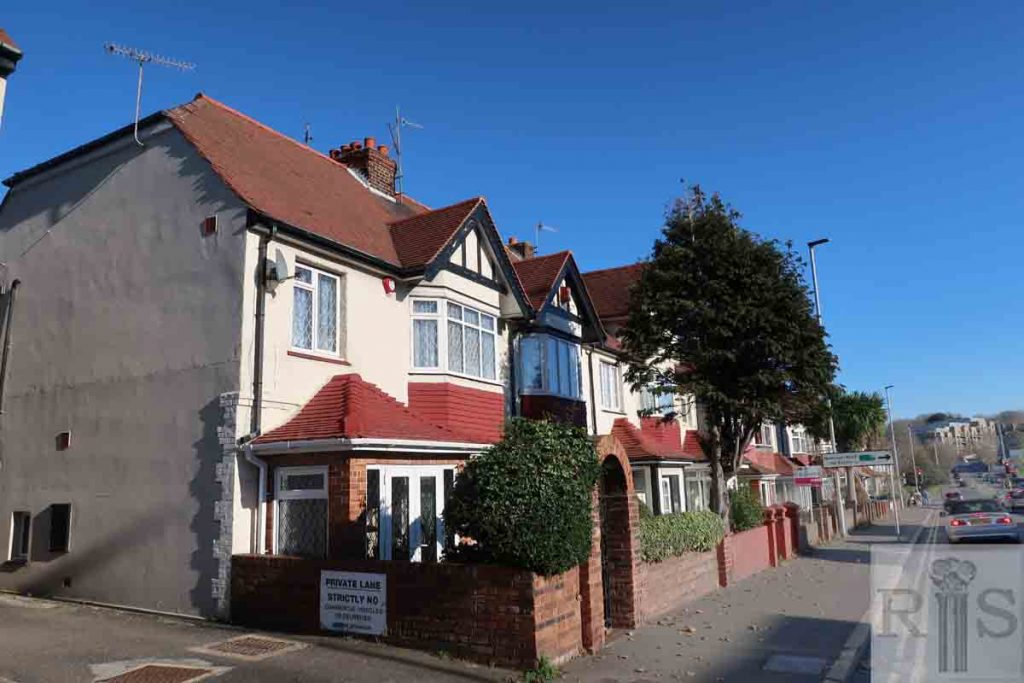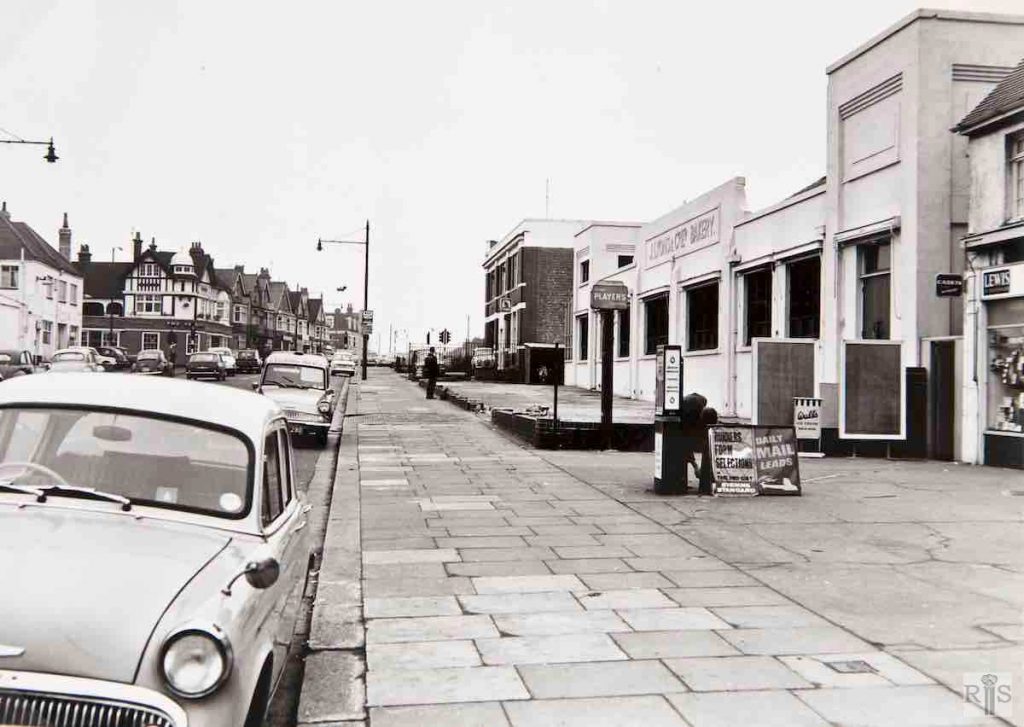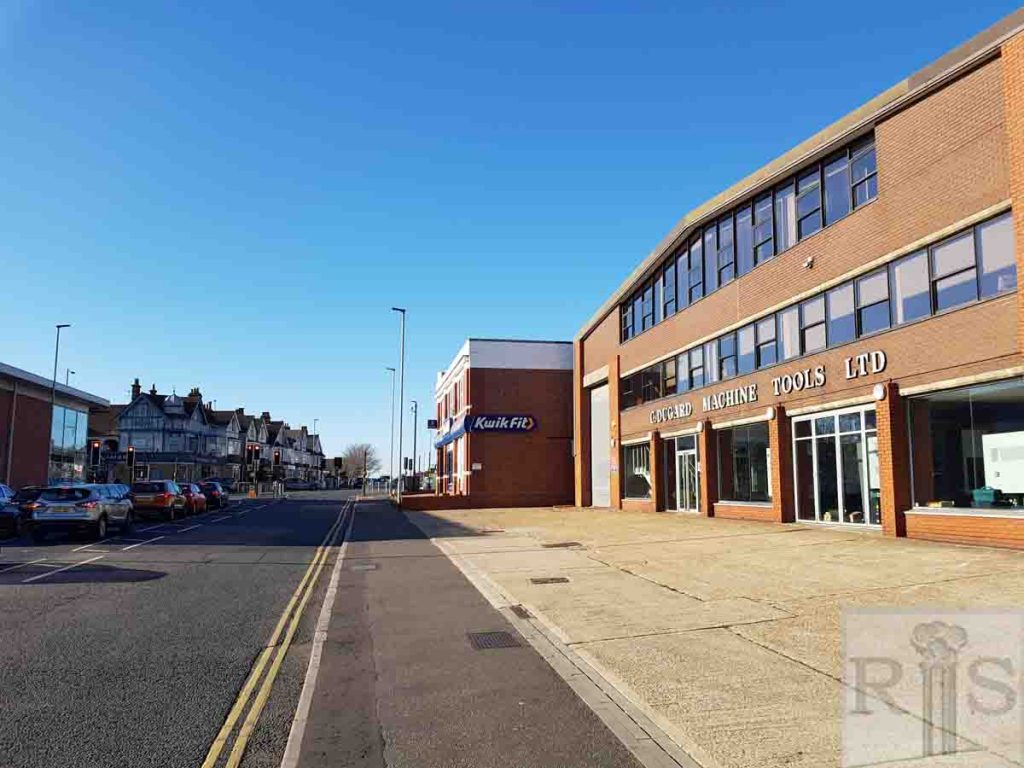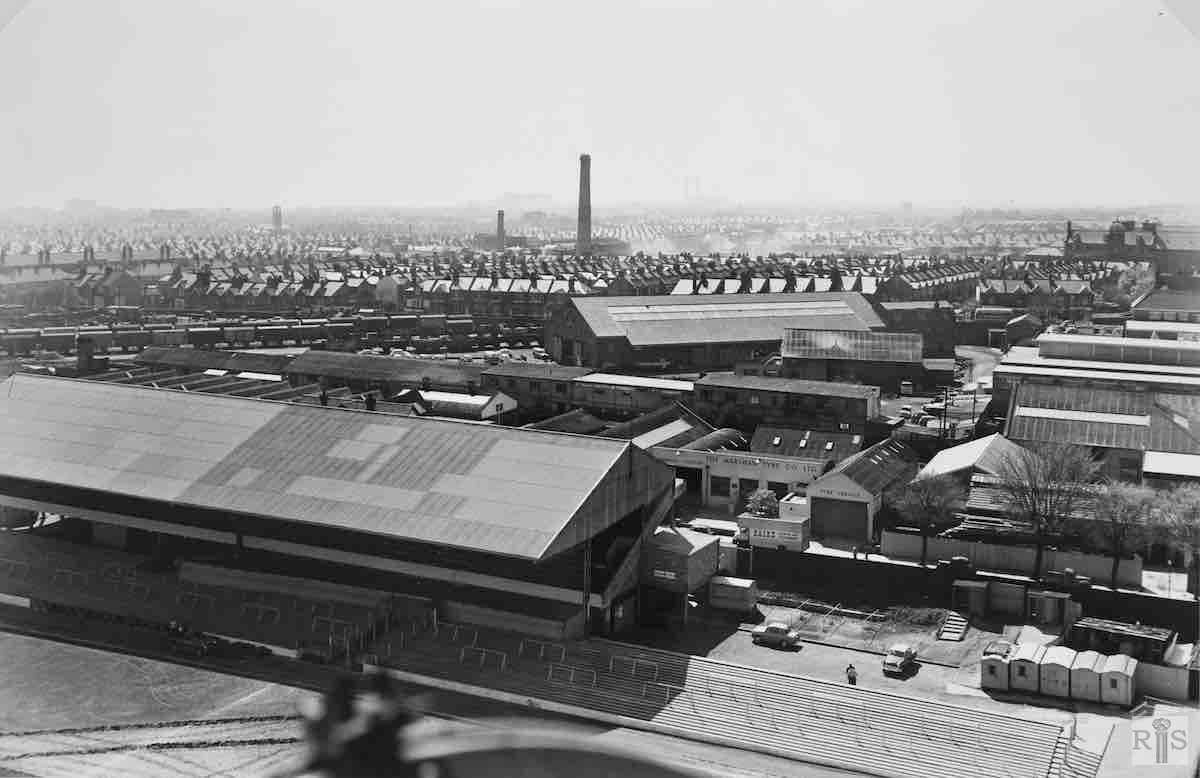
Entries for the BHASVIC site can be found on Dyke Road 3A
James Gray: The team of the season 1909-1910. This team won the Southern league, the Southern Charity Cup and the FA Charity Shield, beating Aston Villa (Division 1 champions) at Stamford Bridge by 1–0. jgc_16_082
James Gray: The team of the season 1907-8. Both teams are grouped in front of the old West Stand which remained there until 1958. jgc_16_083
James Gray: The players and trainers assembled in front of the old West Stand, in August 1929, before the start of that most successful season of 1929-30. Note how formally even professional footballers dressed in those conventional years. jgc_16_086
James Gray: The actual date of the erection of this miserable stand (rabbit hutch it was often called) is unknown, but it seems to have been there in 1905. Photographed in March 1958, and demolished 2 months later. jgc_16_095
James Gray: In this view the cottage is not seen, being just out of the photograph, to the right of the large trees. Albion are playing Portsmouth. Smith scores Brighton’s first goal. 4 September 1912. jgc_16_093
2018: The Goldstone Retail Park was developed on the football ground. Toys R Us collapsed into administration in March 2018. It became a Lidl supermarket. (Photographer: Mark Stephenson)
James Gray: This photograph of central Hove dating from about 1963, shows many features which have now gone. First, the extensive and then busy railway goods yard (now Sackville Industrial Estate). At the right, St Joseph’s Home (Little Sisters of the Poor), now a garden centre. In the centre, the Leighton Road Destructer Chimney and, hazily in the far distance, the Portslade Gas Works, with beyond the Brighton A. and B. Power Station at Southwick. jgc_16_099
James Gray: This photograph of the east side of the ground also shows houses in Fonthill Road and Goldstone Lane, built in the 1950s on the cleared site of Goldstone House, and its extensive garden. These recent houses are clearly distinguishable from their much older neighbours. Taken from the floodlight pylons in May 1963, it shows (extreme right) the dilapidated cottage at one time occupied by workers employed at Goldstone farm. jgc_16_100
2018: The base of the floodlight pylon where the original picture was taken is now a fast food outlet. (Photographer: Mark Stephenson)
James Gray: View of one of the commercial buildings put up on the cleared ground seen in the photograph overleaf. Period about 1967. The houses in Old Shoreham Road beyond are screened from view. The view is from south to north. jgc_16_120
2018: The trading estate that replaced the market gardens is still in situ. (Photographer: Mark Stephenson)
James Gray: This building, at the corner of Newtown Road, was erected about 1930, and was in a number of occupations in the succeeding years. Photographed on 21 July 1968, it was later removed for a car wash, which in turn soon gave way to another commercial building. jgc_16_121
James Gray: About 40 years after the farm was given up, two buildings that were closely connected with it still existed. Two views [jgc_16_102 and jgc_16_104] of the large barn and adjoining farm buildings on April 28 and 21 July 1968, respectively. Despite the comparatively small area the site was sold at public auction for £30,700 and doubtless the buildings will soon be removed. jgc_16_104
2018: The present building houses a kitchen showroom. Previously it was an off-licence. (Photographer: Mark Stephenson)
James Gray: Old Shoreham Road at the top of Montefiore Road, looking west, 1907. Although this photograph is blurred, the Methodist Church can be seen on the left. This was built in 1904 and there were then no buildings between the church and the spur railway line. jgc_17_012
James Gray: This photograph, of 29 September 1968, shows part of Old Shoreham Road at the corner of Hove Park Gardens. Some of the gardens in front of these houses may have to be surrendered when Old Shoreham Road is widened in this area. jgc_17_063
2018: Park House apartments were completed in 2018. (Photographer: Jane Cheema)
James Gray: This house, at the corner of Goldstone Lane, has been a familiar sight to thousands of supporters of Brighton and Hove Albion over many decades, but only the oldest of these will recall when it formed part of Goldstone farm. At the turn of the century there were seven farm cottages, six quite close to the railway line and this larger one, which was inhabited by the farm foreman, a Mr Nye and later, a Mr Laker. When the farm was given up and the ground bought by the Albion, the house was taken into the ground perimeter.
James Gray: [See caption for jgc_17_066 above.] jgc_17_067
2018: Brighton and Hove Albion played their last game on the Goldstone Ground on 26 April 1977. Trees and bushes at the north-east corner of the Goldstone Retail Park, close to Burger King, now occupy the site of the old house, but the multi-gabled bungalow and more modern semi-detached houses in Goldstone Lane are still there. The backs of the taller, terraced houses on the west side of Fonthill Road can be seen behind them. (Photographer: Alan Hobden)
James Gray: Until 1926 there were no buildings on the south side of Old Shoreham Road, between Sackville Road and the [former] Albion football ground. Wasteland extended from the road southwards to a high brick wall, where whippet races were held on Saturday evenings. In 1926 the Sackville Garage became the first building to be erected on this land. This photograph was taken in the autumn of 1927, the time of the Daily Mail campaign – ‘No Soviet Petrol sold here’. jgc_17_071
2018: The site is now occupied by Furniture Village. See also jgc_17_072, 073, 075 and 076 below. (Photographer: Helen Glass)
James Gray: This photograph of a few years later, in 1933, is interesting because it shows the original façade of the Sackville Hotel, which was altered soon afterwards. jgc_17_072
2018: The site of the garage is now occupied by Furniture Village. The Sackville Hotel is now called the Hove Park Tavern. (Photographer: Helen Glass)
James Gray: In this photograph, also of 1933, can be seen the recently constructed Nevill Road, in which a few houses, built by Brooksbank, had been erected on the east side below the Greyhound Stadium. jgc_17_073
2018: The building on the far side of Old Shoreham Road is now Kwikfit. Houses occupy the west (left) side of Nevill Road. (Photographer: Helen Glass)
James Gray: Photograph of the Sackville Garage, 24 September 1961, before the car showrooms were built on the open ground to the east. The building was then just as it was when first built in 1927 when the two original partners lived in two flats on the first floor with entrance doors at each side. Additional Information: Replaced by “Furniture Village”. jgc_17_076
2018: The site of the old Sackville Garage is now occupied by the Furniture Village superstore.
James Gray: In the mid-1920s this was still little more than a country road with a few buildings on the north side. In 1930 this row of houses was built on Clark’s orchard at the same time as Park View Road and when Nevill Road was merely a chalk track leading to the Greyhound Stadium. In 1967, by now the busiest east-west road in the district, widening was in full progress and part of the front gardens had been sacrificed, as seen in this photograph of December 1st. jgc_17_077
James Gray: Old Shoreham Road, between Holmes Avenue and Sackville Road, was laid out for building in 1930, and allowance for later widening was provided on the north pavement which was twice the width of the south pavement. Similarly, when Nevill Road was projected in 1932 this provision was made on the west pavement and, higher up, on the north side of the road.
